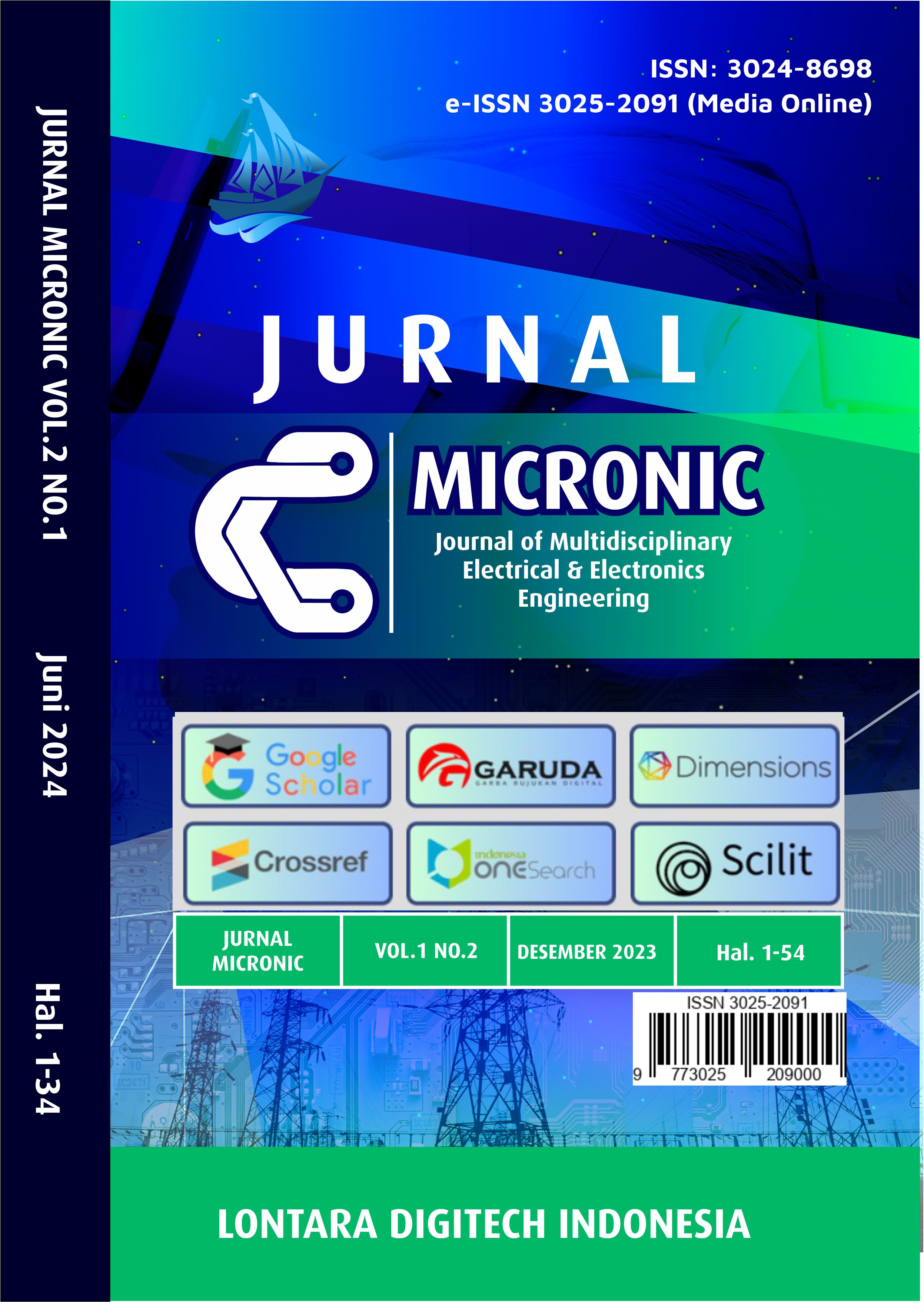Landslide Early Warning System Based on Multi Sensors and Artificial Internet of Things (AIoT) : A Review
DOI:
https://doi.org/10.61220/micronic.v2i1.242Keywords:
Landslides, Early Warning System, Real Time, IoT, InformationAbstract
Landslides occur due to shifting soil, flooding, and rainfall with high intensity of rain resulting in excessive water content in the ground. It takes a system that can acquire data in the field to predict the occurrence of landslides. Slope condition analysis is an analysis that must be carried out to find out how fast and appropriate action must be taken if the slope collapses or landslides. This study focuses on developing an effective Landslides Early Warning System (LEWS) that provides real-time information. In the literature study to understand some of the methods used based on previous research. This survey follows the steps by conducting a research question (RQ), then searching and observing previous research from the journal database. Based on ten articles, this study concludes that currently, there are various types of people who use Machine Learning taken from GIS Maps, use geosensors to detect ground shifts, detect rain to anticipate landslides on mountain slopes, and use Lo-Ra radio to transmit information on ground displacement. Based on the literature review that has been carried out, a LEWS system design using multiple sensors and the Artificial Internet of Things (IoT) can be developed.
References
Ali, S., Biermanns, P., Haider, R., & Reicherter, K. (2018). Landslide susceptibility mapping by using GIS along the China–Pakistan economic corridor (Karakoram Highway), Pakistan. Natural Hazards and Earth System Sciences Discussions, 1–28.
Anh Bui, T., Fathani, T. F., & Wilopo, W. (2019). Landslide Risk Assessment for Designing Monitoring and EarlyWarning System. Journal of Applied Geology, 4(1), 1. https://doi.org/10.22146/jag.48735
Gamperl, M., Singer, J., & Thuro, K. (2021). Internet of things geosensor network for cost-effective landslide early warning systems. Sensors, 21(8), 1–23. https://doi.org/10.3390/s21082609
Khaled, Z. E. L., & Mcheick, H. (2019). Case studies of communications systems during harsh environments: A review of approaches, weaknesses, and limitations to improve quality of service. International Journal of Distributed Sensor Networks, 15(2). https://doi.org/10.1177/1550147719829960
Kitchenham, B., & Brereton, P. (2013). A systematic review of systematic review process research in software engineering. Information and Software Technology, 55(12), 2049–2075. https://doi.org/10.1016/j.infsof.2013.07.010
Lin, Z., Sun, X., & Ji, Y. (2022). Landslide Displacement Prediction Based on Time Series Analysis and Double-BiLSTM Model. International Journal of Environmental Research and Public Health, 19(4). https://doi.org/10.3390/ijerph19042077
Pham, B. T., Shirzadi, A., Shahabi, H., Omidvar, E., Singh, S. K., Sahana, M., Asl, D. T., Ahmad, B. Bin, Quoc, N. K., & Lee, S. (2019). Landslide susceptibility assessment by novel hybrid machine learning algorithms. Sustainability (Switzerland), 11(16), 1–25. https://doi.org/10.3390/su11164386
Piciullo, L., Dahl, M. P., Devoli, G., Colleuille, H., & Calvello, M. (2017). Adapting the EDuMaP method to test the performance of the Norwegian early warning system for weather-induced landslides. Natural Hazards and Earth System Sciences, 17(6), 817–831. https://doi.org/10.5194/nhess-17-817-2017
Prakasam, C., Aravinth, R., Kanwar, V. S., & Nagarajan, B. (2021). Design and Development of Real-time landslide early warning system through low cost soil and rainfall sensors. Materials Today: Proceedings, 45, 5649–5654. https://doi.org/10.1016/j.matpr.2021.02.456
Su, H. (2022). Predicting Change in Adaptation Strategies of Households to Geological Hazards in the Longmenshan Area , China Using Machine Learning and GIS. Water, 14(1023). https://doi.org/https://doi.org/10.3390/w14071023
Downloads
Published
Citation
Issue
Section
License
Copyright (c) 2024 Mudarris (Author)

This work is licensed under a Creative Commons Attribution-ShareAlike 4.0 International License.










 Email : micronic.lontara@gmail.com
Email : micronic.lontara@gmail.com
